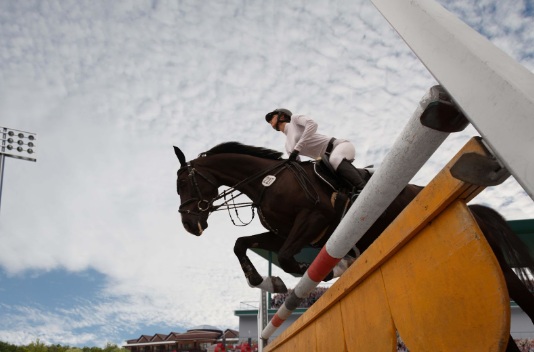How has horse racing managed to maintain its popularity amidst other innovative and exciting options? A tandem of luck, intensity, and in-depth analysis – that’s the answer. Most people treat it as a temporary pastime: watching a primary race and betting on a favourite participant can be a great weekend escape.
The downside of the industry is its strict, structured discipline, where it takes months for a horse to reach the start line in perfect condition. Offline and online betting rely on this data analysis: punters can bet on specific animals based on a team’s preparation. But how does this process work? Let’s learn more about this discipline.
Selection and Training: The First Steps
 A horse’s journey in the world of horse racing begins before its first start – even before its first training. Breeders are specially trained to select foals professionally, who are trained to ride from foalhood, learning commands and how to run in a group. The goal isn’t perfect performance, but instead building trust between jockey and horse. In the equine world, soft skills are just as necessary – controllability and poise are as important as speed and physical fitness.
A horse’s journey in the world of horse racing begins before its first start – even before its first training. Breeders are specially trained to select foals professionally, who are trained to ride from foalhood, learning commands and how to run in a group. The goal isn’t perfect performance, but instead building trust between jockey and horse. In the equine world, soft skills are just as necessary – controllability and poise are as important as speed and physical fitness.
Beginning of Preparation: Skills and Discipline
Once the horse is well-controlled and handles basic exercises, specialists introduce interval training and increase the duration of rides. The subsequent process is built on three main stages:
- Strength and endurance development. Strength in the legs and back is developed through exercises, climbs, running on sandy tracks, and riderless galloping to maintain natural movement.
- Working with the jockey. These two must work as one – this will ensure a strong partnership and increase the chances of winning. Trainers also incorporate cue practice, reactions on turns, and pacing throughout the distance. What’s interesting is that this isn’t so much about physical work as it is about psychological synchronisation. On the track, there’s no time to think and analyse; a 100% intuitive understanding of every command and movement is essential.
- Training regime. Structure and discipline are essential in every sport, so most training sessions take place early in the morning when conditions are as close to those of a real race as possible. Like people, horses are given time to recover – low-intensity exercise, a cool-down, water treatments, and even massage.
The basic preparation process is very similar to that of regular professional sports: the principles, mechanisms, goals, recovery, and psychological aspects are just as important as the main training. Therefore, specialists monitor the horse’s adaptation to stress, as well as breathing, heart rate, and temperature.
Psychological Preparation
Stress is common among all athletes, even ungulates. A horse’s psyche is a multi-layered system that deserves as much attention as physical training.
Besides building trust and synchronising with the jockey, the horse needs to prepare for stress and new sounds. The track during competitions is filled with crowd sounds and the scents of people and animals, creating a completely different atmosphere. Trainers imitate crowd sounds, recorded start and finish signals, and even the sounds of other competitors.
Like people, horses experience excitement. New sensations mustn’t disrupt the future champion’s concentration, allowing it to focus on the race and avoid disappointment in the event of a loss. Modern relaxation techniques help manage these feelings: slow walks, calm music, and water dousing have proven practical benefits.
Day X: Final Preparation for the Decisive Race
The moment has arrived: it will show how diligently the team prepared for the event! Of course, the day begins with a detailed check: the future champion must be 100% ready. The veterinarian measures vital signs while the team checks the equipment.
Communication with the team and final touches help ensure the jockey and horse work in unison. They spend time alone, checking commands and calming the horse. An atmosphere of mutual trust puts both into competition mode. Then, specialists check saddles, bridles, stirrups, and other equipment. If weather conditions or the track change, the team has time to adjust strategy.
After the Competition: Care, Diet, and Recovery
Hitting the track is a huge step for an animal. Like humans, horses experience stress, excitement, and even disappointment. This is where the jockey comes in: their best friend, companion, and primary source of support. Now the task of these two is to go for a leisurely walk and cool down.
The next step falls to the rest of the team: the veterinarian performs an examination, measures the pulse and breathing, and the team takes care of the watering and stretching.
A Modern Approach: The Role of Technology and Equipment
Modern gadgets and scientifically proven approaches have made the preparation and analysis process accurate and comfortable for the entire team. Today, GPS trackers and sensors for heart rate and respiration monitoring, video surveillance for movement analysis, and simulators simulating different track surfaces and elevations are increasingly used.
